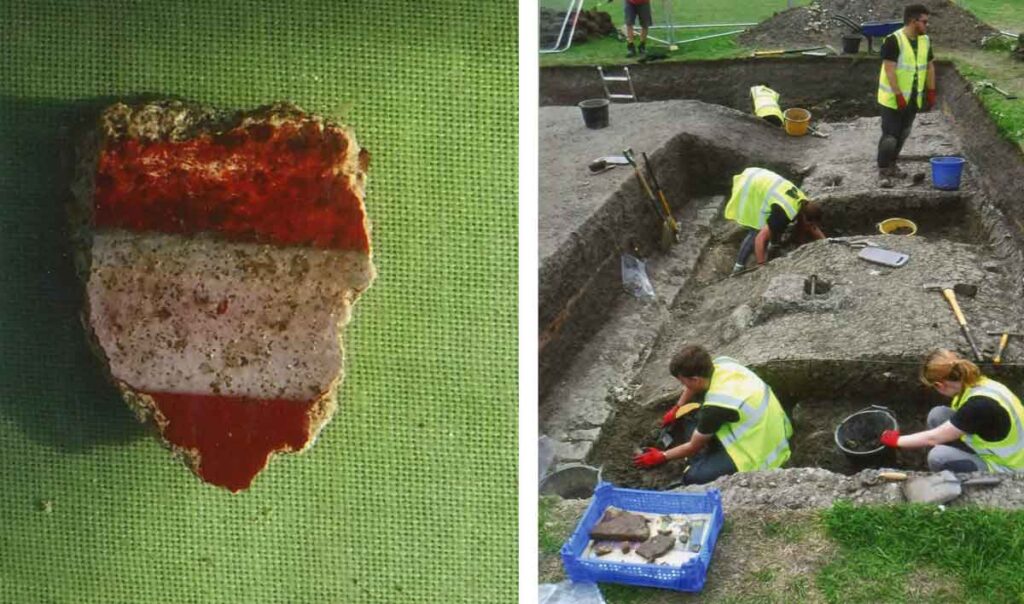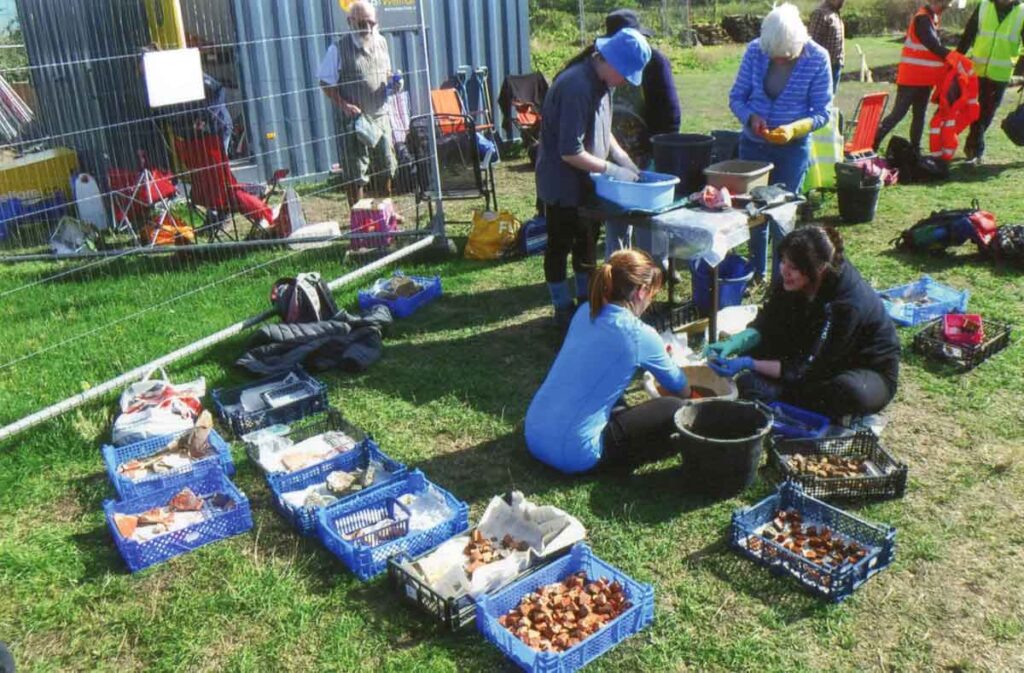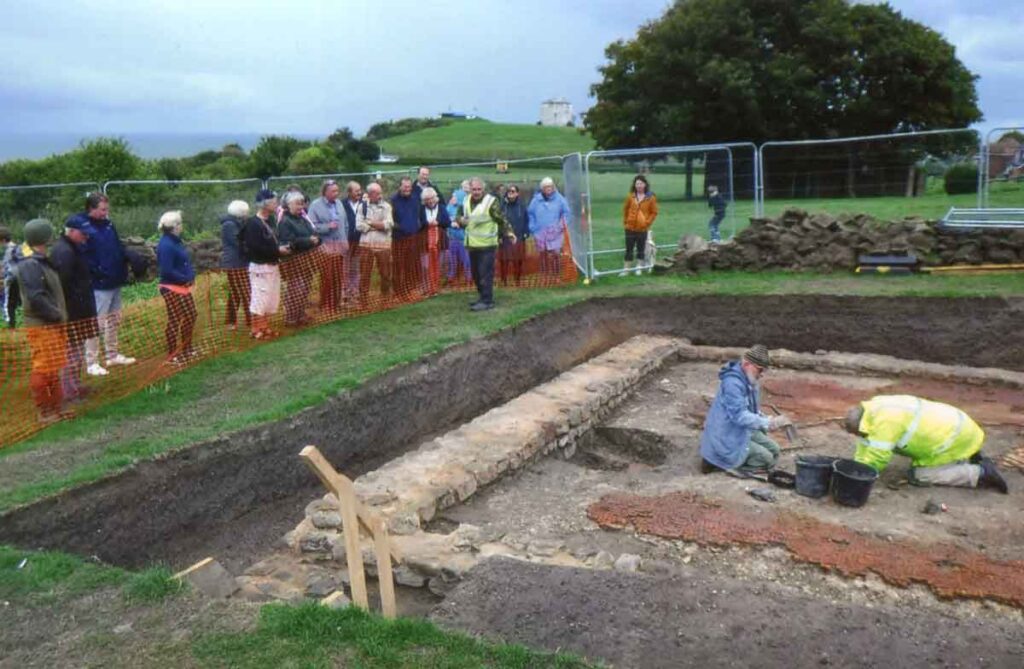Archaeologists, volunteers and students work to reveal the site Photo: Ray Duff
Words and photos by Ray Duff – During recent weeks, Canterbury Archaeology Trust along with members of Folkestone Research & Archaeology group, Dover Archaeology group, Kent Archaeology Society and University of Kent archaeology students have re-opened and explored part of the massive double Roman Villa site on East Cliff in Folkestone.

They were watched by many very interested visitors to the site including local people and those on holiday, who were informed of what was being found.
Originally excavated in 1924 by Samuel Winbolt, the Villas, including the central mosaic room, which was used for dining, were left untended after the Second World War. This years dig has been to discover what may have been left of the mosaic room and surrounding parts of the Villa.

Before work could begin it was necessary to re-open the site and the fly-ash, which backfilled it in 1957, was carefully removed and placed in a special section, prior to further careful cleaning and excavating.

As has already been revealed the room with the AD 200 built Villa mosaic has been found to have survived with more of the central design left than originally thought.
Archaeologists also re-examined parts of the back wall and behind the second Villa, along with removing some original 1924 backfill to expose signs of the AD 90-100 first Villa compacted flooring.
The back wall of the second Villa has survived and outside of this it appeared to have some third century building collapse material, some odd stones which may be Iron Age, and signs of the original 1924 visitor centre footings.

Careful examination through a few pits under and beside the second Villa revealed clear signs of the pinkish first Villa flooring, called ‘Opus Signitum’, made of crushed tile, mortar and some of the original walls.

Numerous finds were again unearthed, including animal bone, shell, painted wall plaster- indicating a High Status occupant, and some more roof tile.
It is hoped that the excavations with modern equipment and techniques, will help with further explorations of the Villas and the surrounding huge Iron Age site, known to have preceded the Roman era.
They all form the nationally and internationally important historical site in Folkestone.

Information sources
Canterbury Archaeology Trust: https://www.facebook.com/CanterburyArchaeologicalTrust/
Folkestone Research and Archaeology Group:
Dover Archaeology Group/Kent Archaeology Society:
